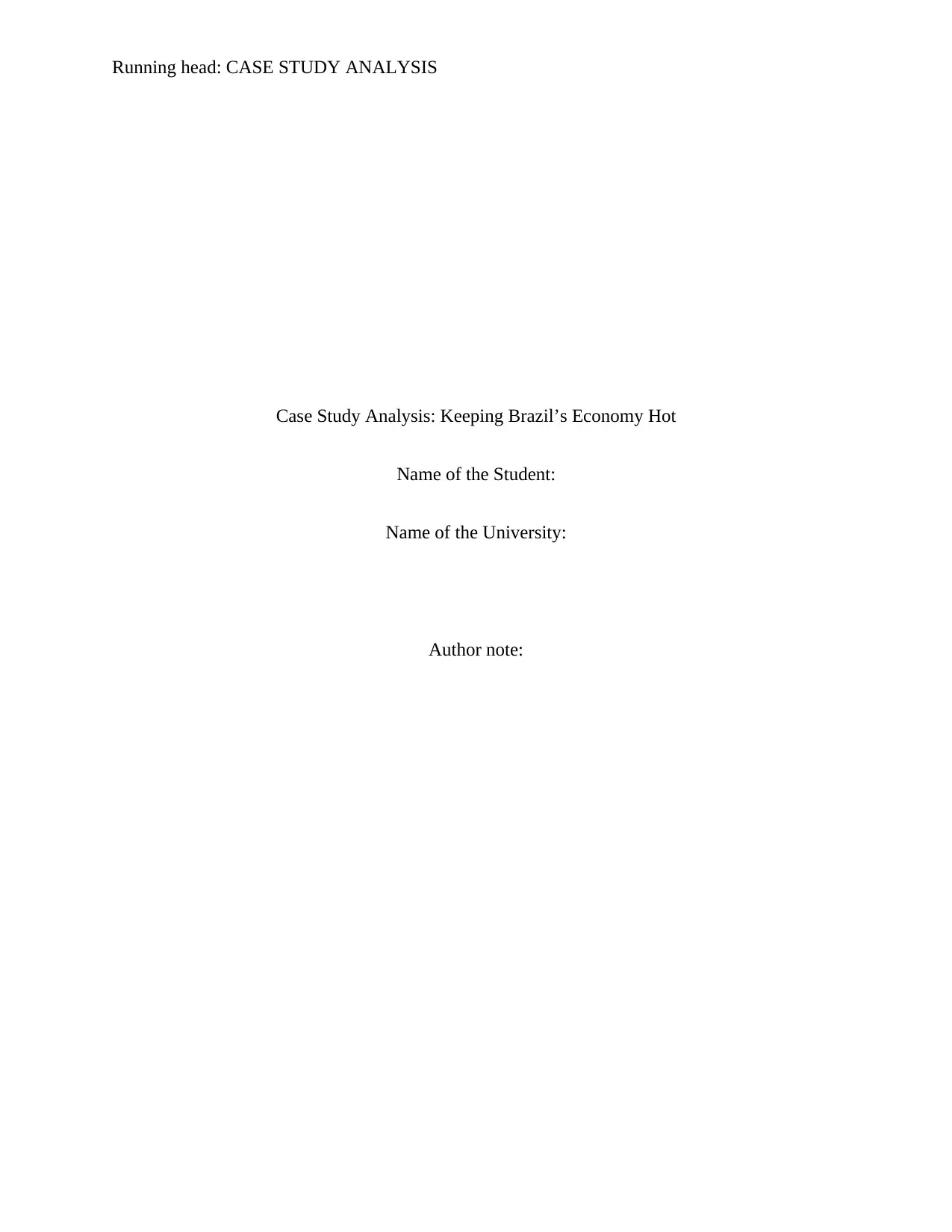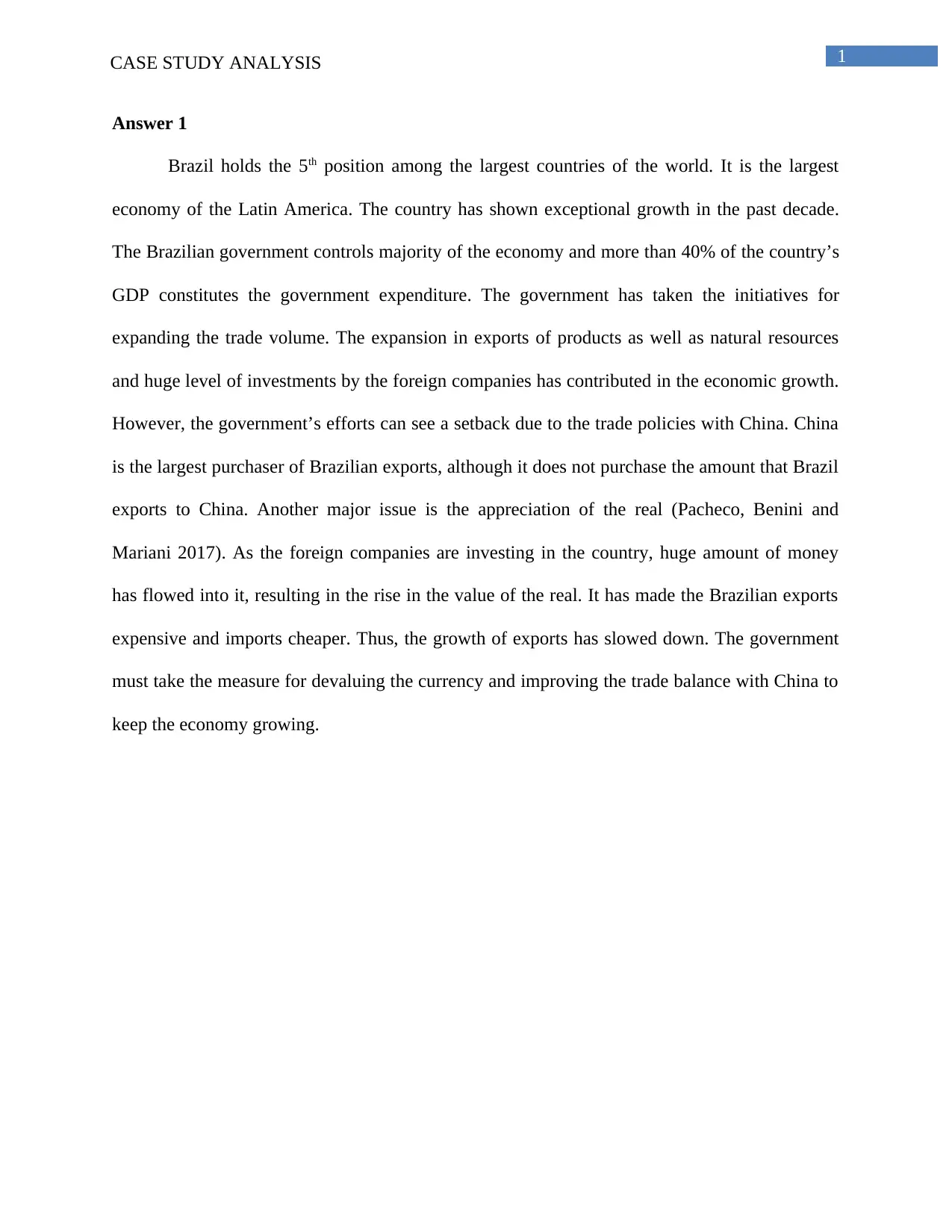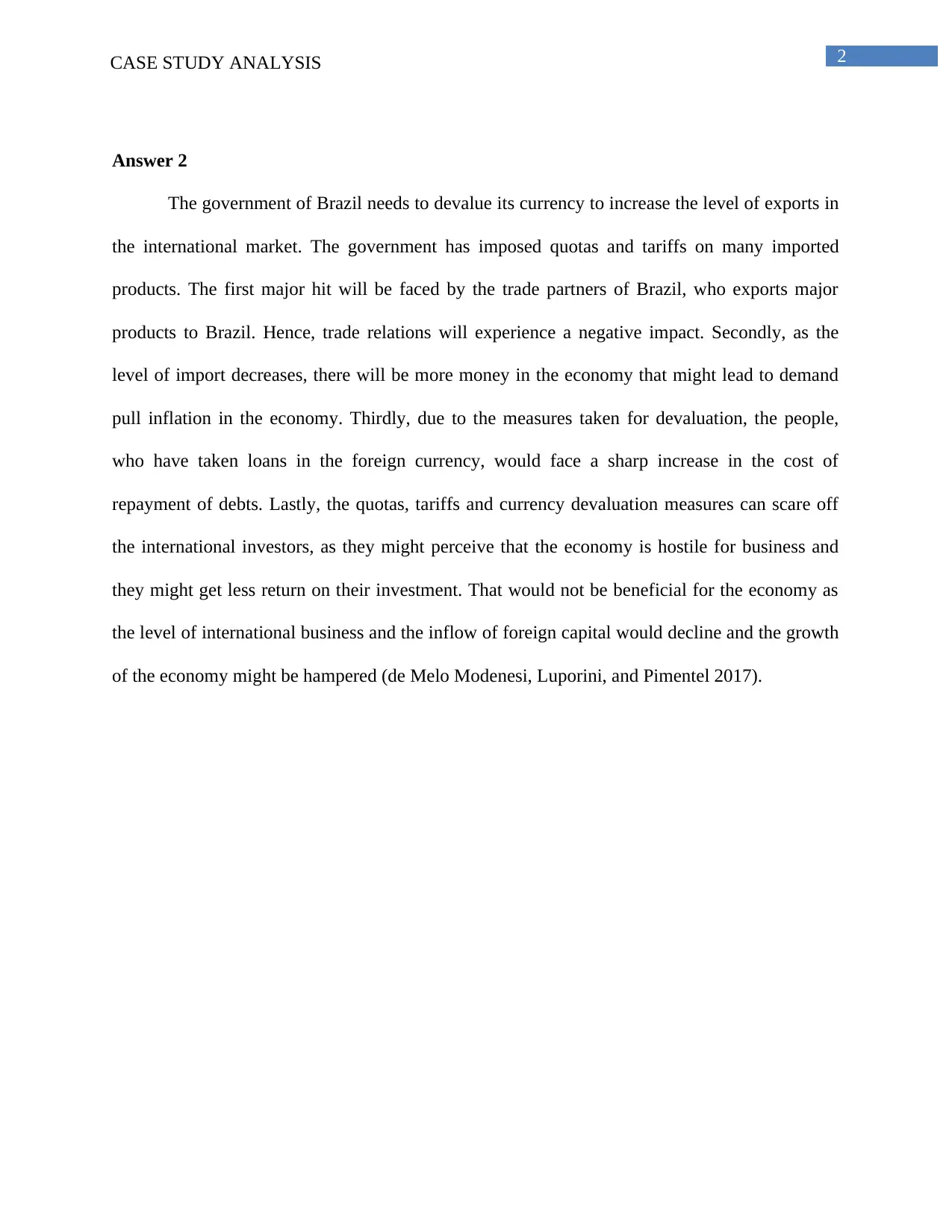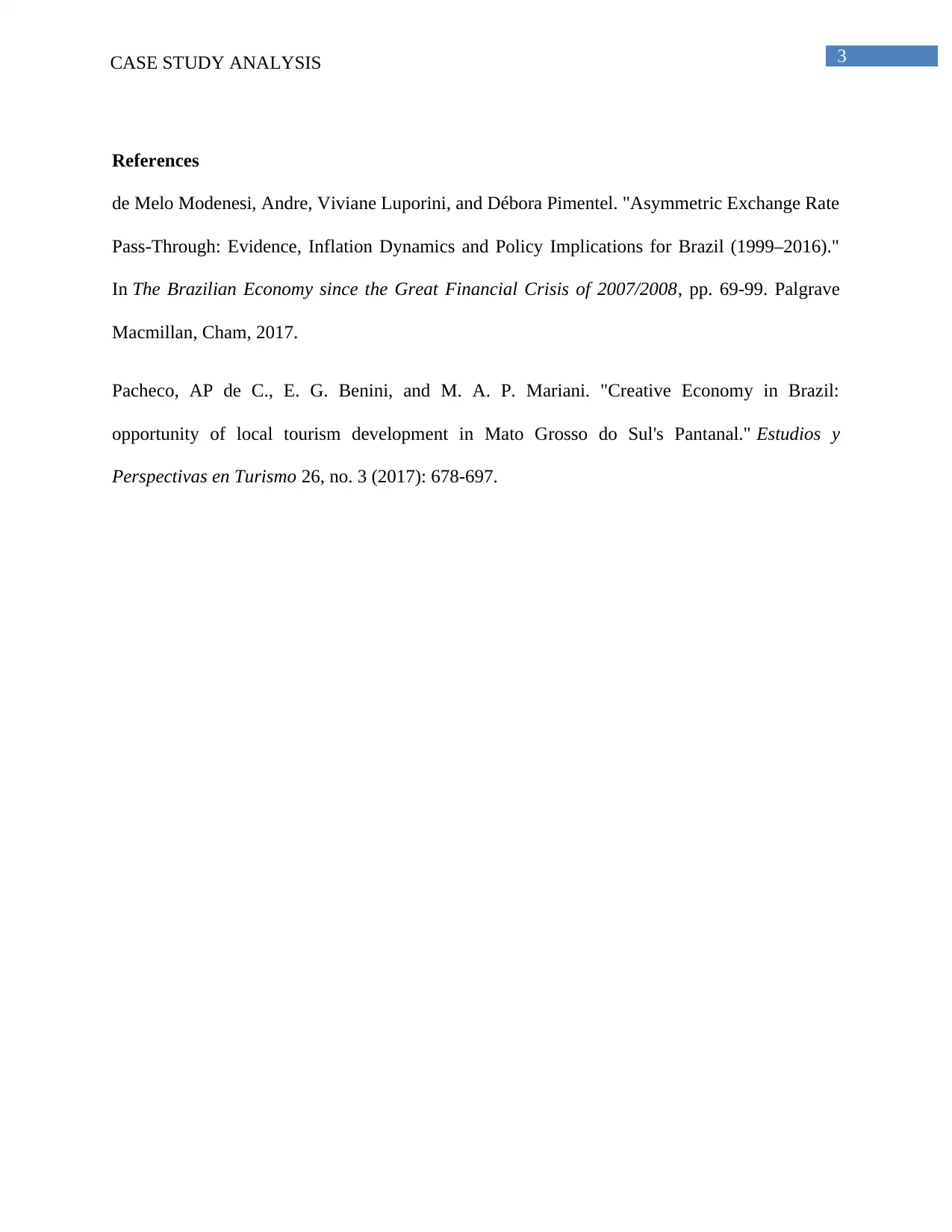Case Study Analysis: Brazil's Economic Growth and Challenges
VerifiedAdded on 2020/05/28
|4
|583
|294
Case Study
AI Summary
This case study analyzes the economic situation of Brazil, focusing on its growth, challenges, and the impact of government policies. The analysis highlights the country's significant economic growth, driven by exports and foreign investment, while also addressing the challenges posed by currency appreciation and trade policies with China. The study explores the need for currency devaluation to boost exports and mitigate the negative impacts of trade imbalances. It discusses the potential consequences of such measures, including impacts on trade partners, inflation, debt repayment, and foreign investment. The analysis references academic sources to support its findings and provides a comprehensive overview of the economic landscape, offering insights into the complexities of managing economic growth and addressing trade-related issues. The case study concludes by emphasizing the importance of balancing economic strategies to ensure sustainable growth and stability.
1 out of 4











![[object Object]](/_next/static/media/star-bottom.7253800d.svg)